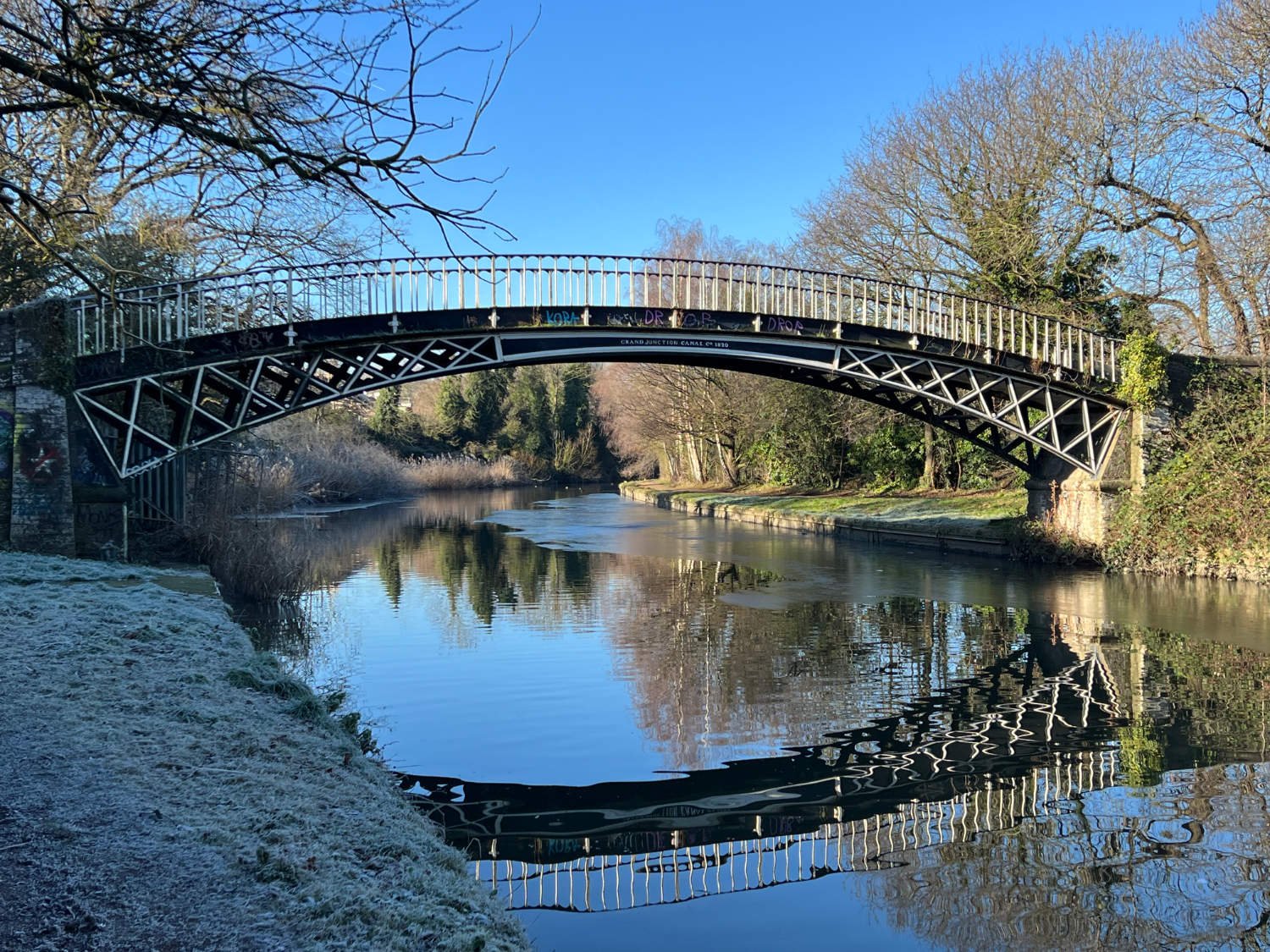27km Lower Brent River Ride
Hanwell locks
Ride Overview
"I am engineer to the finest work in England", declared a 27 year old Brunel as he surveyed his finished viaduct which still crosses the Brent valley. Queen Victoria enjoyed travelling over it so much, that she ordered her train to stop every time so that she could admire the view of water meadows and woods. The route is the perfect urban ride; largely traffic free, woods and water, coots and parakeets, the best of industrial and domestic architecture, elegance and refinement. It’s a ride through the rough, the bold and beautiful.
Ride reviewed April 2024
Part of the ‘Guided Rides Series’ 2024



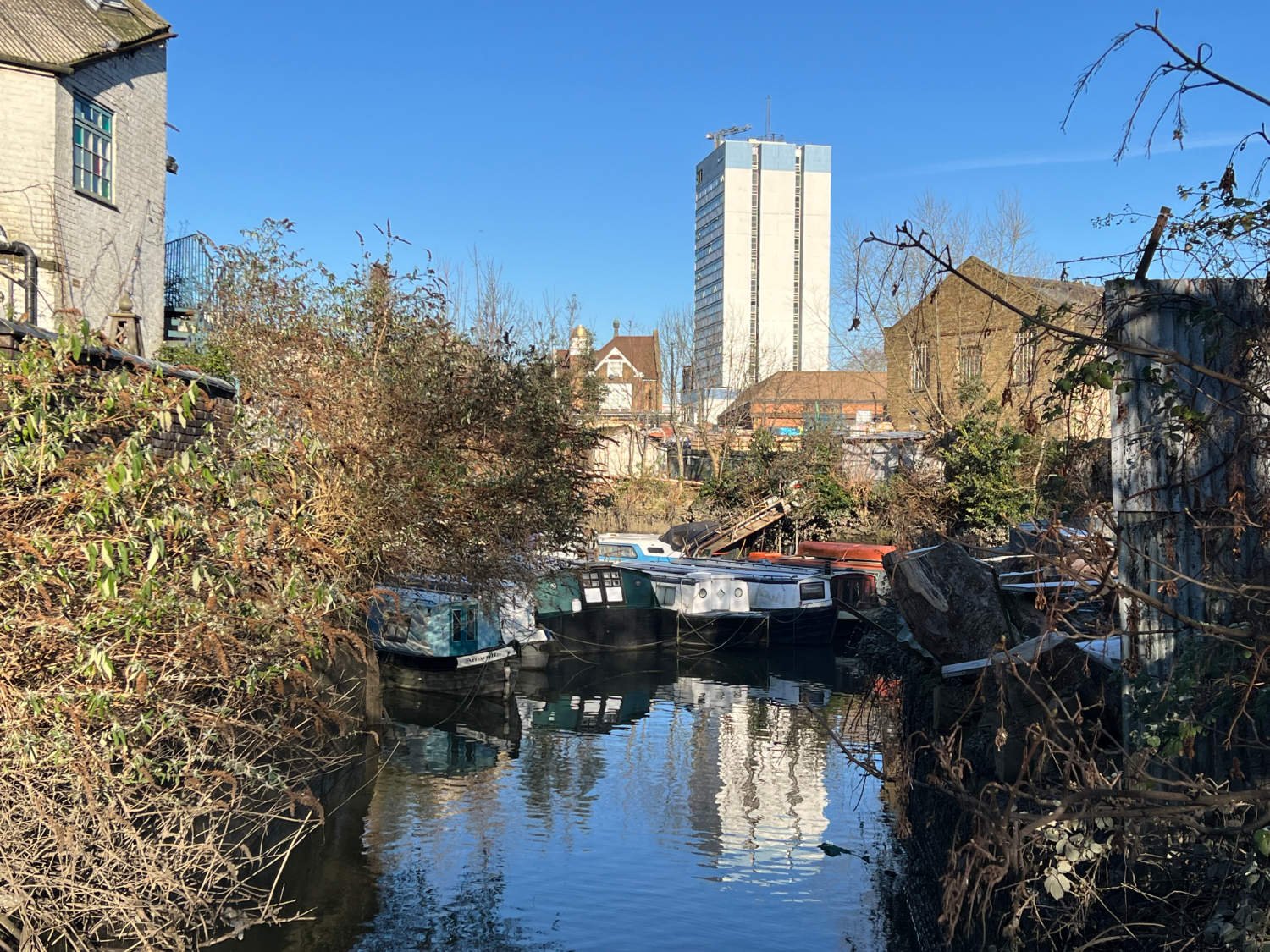


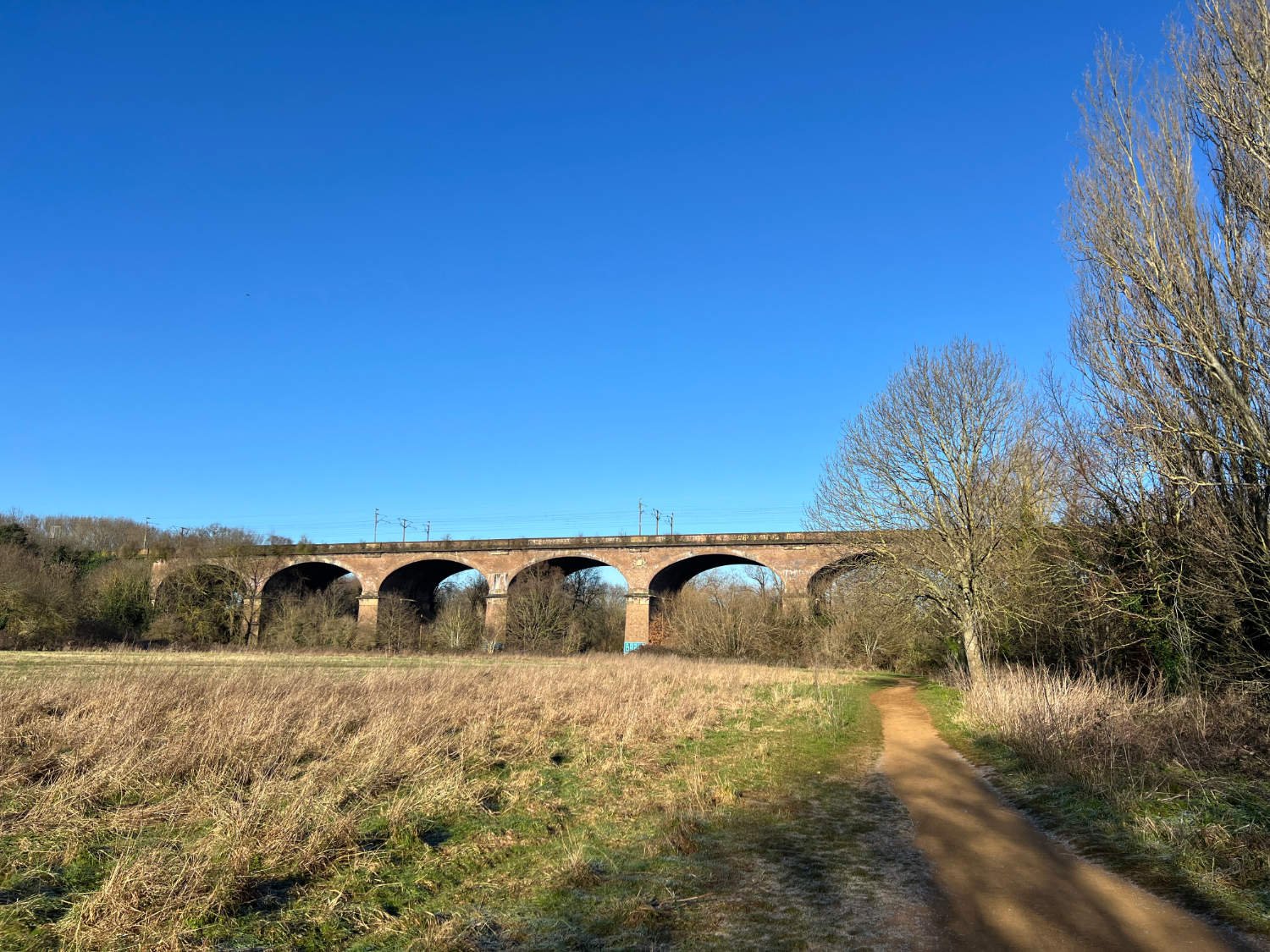
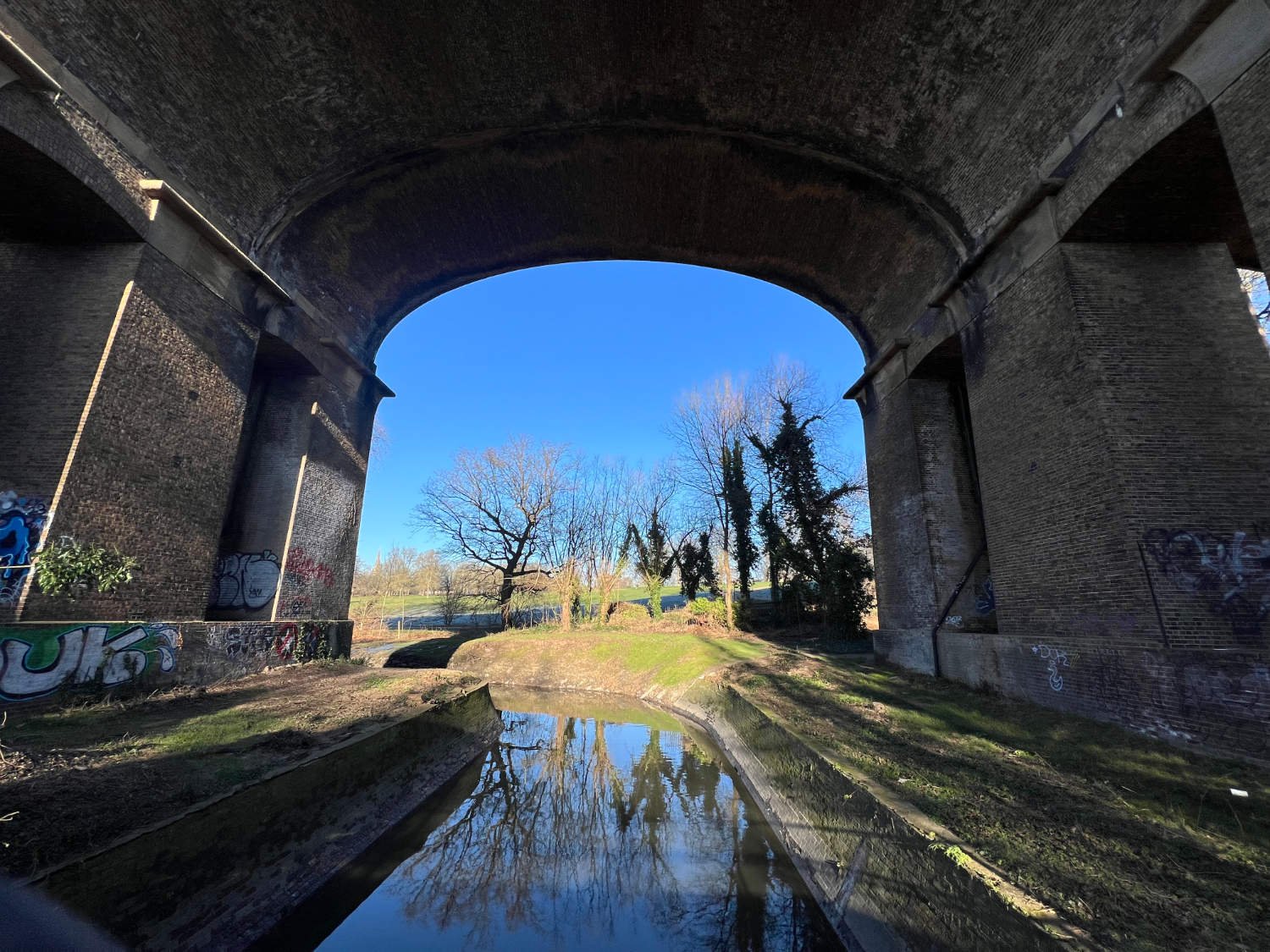

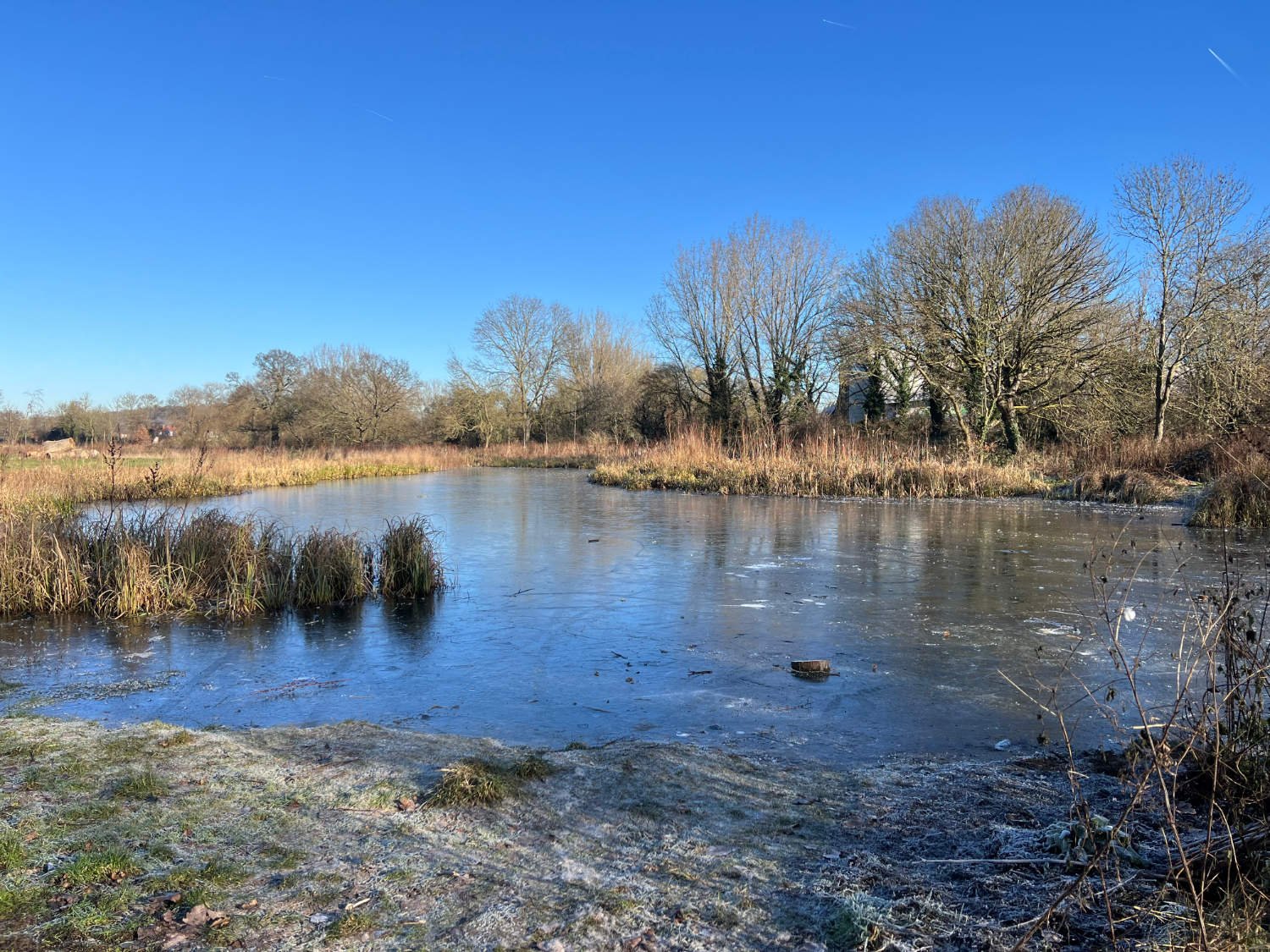

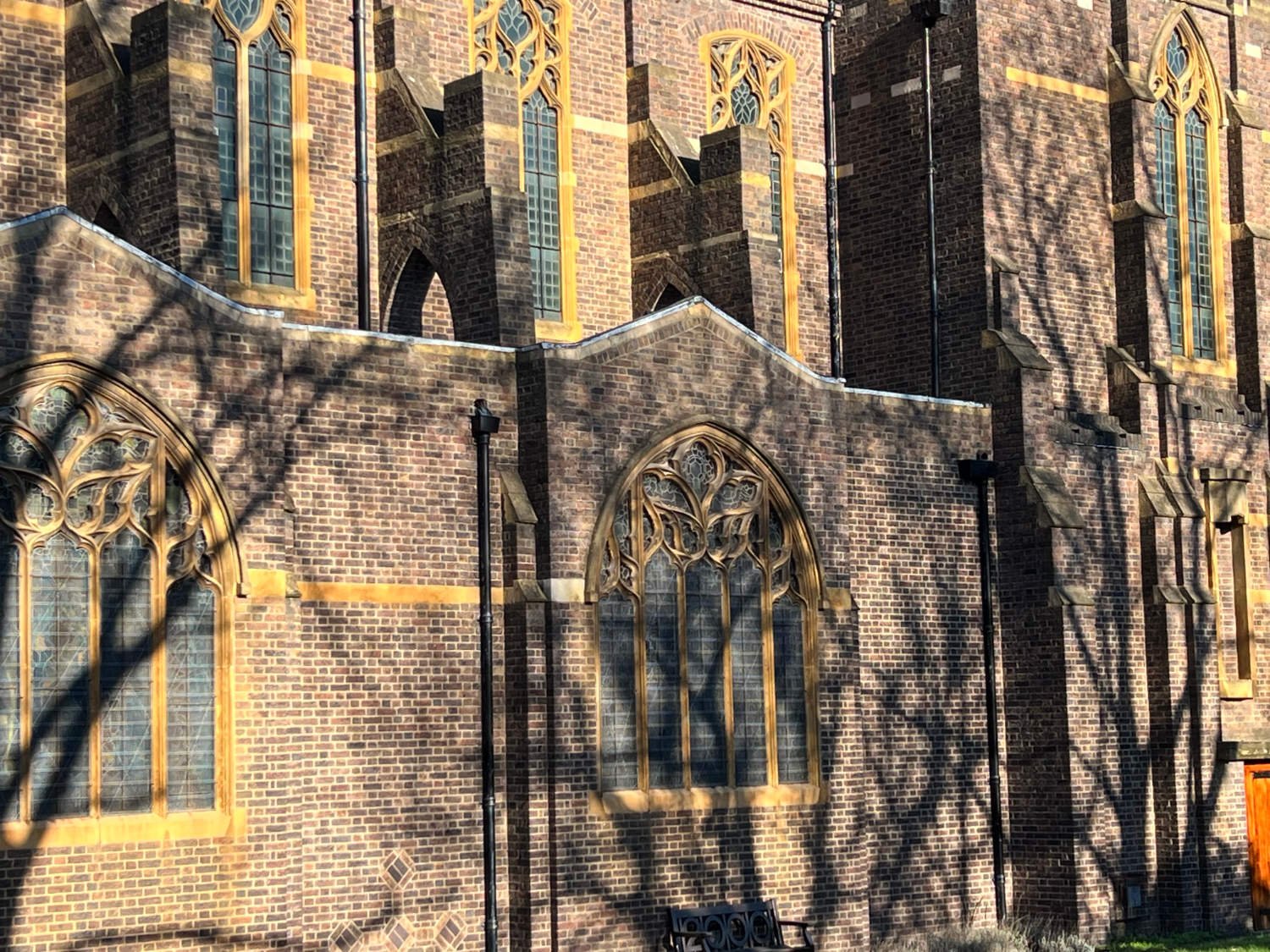
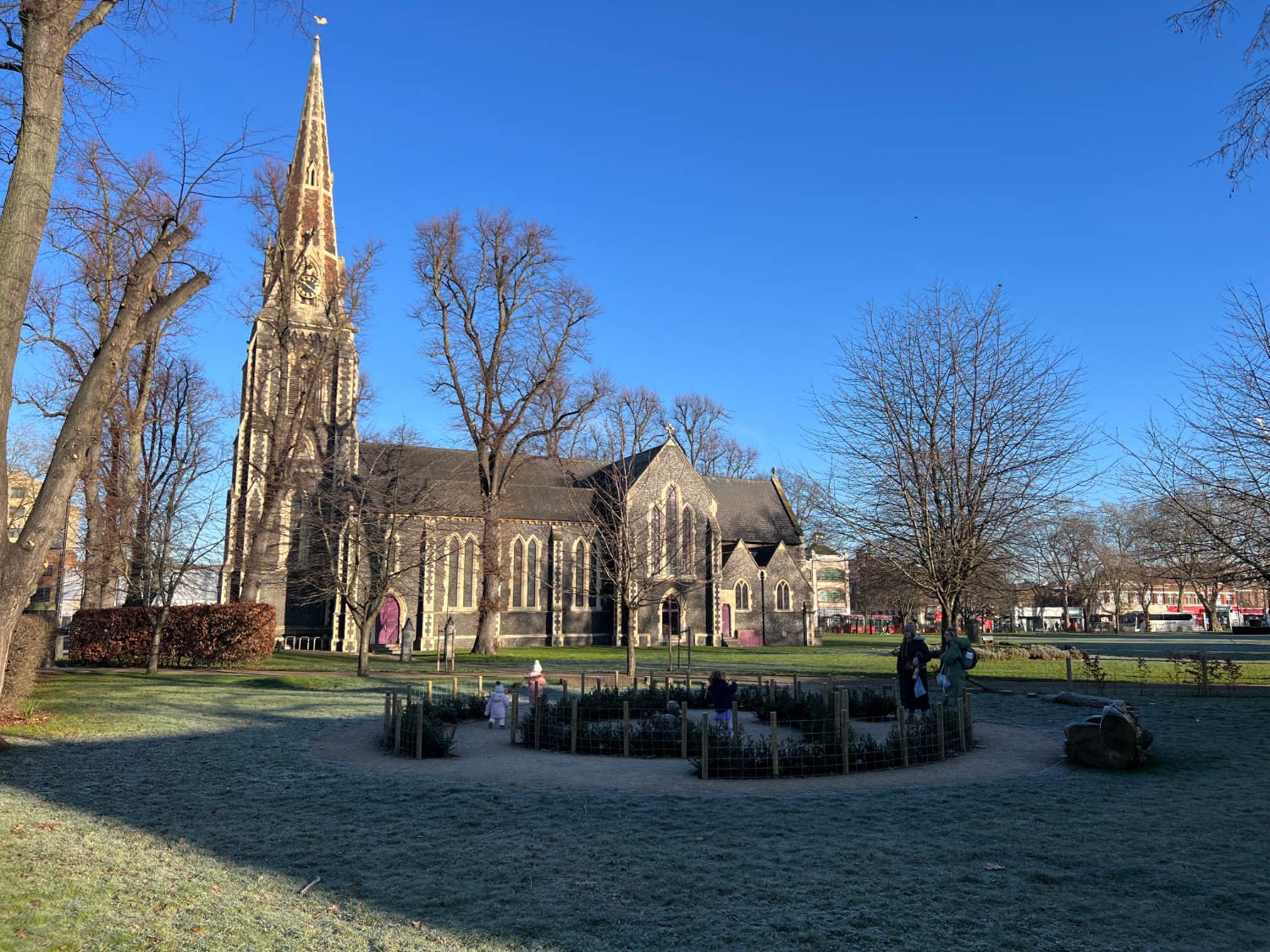
Ride Practicalities
START/FINISH: Brentford Docks DISTANCE: 28km TOTAL ASCENT: 163m TERRAIN AND SURFACES: Traffic-free cycle lanes, riverside paths, and quiet roads through the garden suburbs. A good ride for a gravel/hybrid bike or anthing with more than 28mm tyres RECOMMENDED CAFÈS/PUBS: Brentford; Rye by the water, other places remain for you to discover based on budget, mood and need NEARBY MAINLINE TRAIN SERVICES: Brentford, Chiswick and Kew Bridge, all served by mainline trains PLACES TO VISIT; St. Mary’s Perivale (Tuesday and Thursday concerts throughout the year) LINKS TO OTHER RIDES: London to Windsor, Arcadian Thames, Between the Great West Roads, On the fringes of the Thames
Brentford on a cold, crisp winter’s day; there’s clanking and drilling as the docks are again transformed. There’s the glide of a swan through the ice flows. There’s the filigree of orange willow against a lapis sky. There’s a rippling sculpture of polished steel with hand cut patterns of water lines and swimming fish.
Simon Packard's 'Liquidity'
‘Liquidity’, the sculpture standing at Ferry Wharf, had a sticky beginning. Commissioned in 2002 by Fairview Homes it, like most public art in the UK, drew derision and complaints; ‘a number of residents at the luxury development have been complaining about the sculpture, citing health and safety reasons, and claiming that it has obscured their view of the riverside’. These complainants are self-same people who have closed a thoroughfare which has been used by the public around the docks for centuries. Yet despite the best efforts of the NIMBYs, Simon Packard’s piece thankfully remains; bold and striking, a landmark which is as intriguing close up as it is from a distance.
Leaving the Thames, the route takes you through the hype of the developer Ballymore’s ‘Brentford Project’ - ‘A place of wordsmiths, music makers, boat builders and bakers.’ And for the moment until their rent rises force them out, they are still in situ; the Waterford Arms has live music most nights, there’s a brewer, bike repair shop, boat yards, pubs, cafes and a classic car centre. Brentford Dock, is for now, a picture on how such places used to be - a little ramshackle, laden with atmosphere and surprise.
Across the old Great West Road which linked Bristol to London in pre-motorway days, you ride briefly through some silent and dull modern developments, and enter a world of ducks and willow. The word ‘Brent’ is said to have derived from an old English word meaning ‘sacred water’, or ‘holy one'. There is a connection too, with the Celtic goddess Brigantia, the bringer of poetry, springtime and love. The ride is certainly delightful in spring, but in winter it takes on a different hue; muted reds and oranges, vivid blues and whites. The lines are cleaner, the path on a frosty morning, firm and ice free. There are fewer people to dodge and give way to.
Gallows Bridge, is a graceful single span built by the engineer Thomas Telford in 1820. It is so named because in nearby woods, local legend states that an unknown man was found hanging from a tree whilst the bridge was being built. No record of his misdemeanour survives.
The River Brent
The river here forms part of the Grand Union Canal. Soap, beer, iron, grain, manure, bricks and much more besides, were all hauled through these waters. Today, the path is little used and the canal is all but empty of craft. For the cyclist, the riding on the earthy and sometimes bumpy path is a sylvan delight, deep in the West London countryside. In summer the banks are lined with cow parsley and a million other flowers, and in winter the stems of trees set against the pale sky, lift any jaded soul. Despite the country setting, industrial history is never far away. The Hanwell Flight of locks, is London’s largest flight and dates back to 1794, raising the canal by over 16m in less than a kilometre.
The Wharncliffe Viaduct
A short ride through woods and across a water meadow, the magnificent Wharncliffe Viaduct spreads out before you. It’s an arresting sight, inspired by the architecture of Ancient Egypt. Across a park, you pass London’s only thatched cottage, as oddly striking in this suburban setting as were the Egyptian pylons. You leave the river for a short time as you ride up the valley, on cycle paths across water meadows and beside roads. Once in Perivale, there’s a short diversion to one of London’s loveliest and most unexpected churches.
St. Mary’s Perivale is a London oddity. The sign outside the building gives a construction date of 1135 (although recent research has put the date back to 1205). Still, the wooden church tower is a reminder that this was once heavily wooded land, where the trees were used as the main building material. However, whilst the church is lovely, it is the churchyard which is the more unusual. The Reverend Hughes, who was Rector from 1861 to 1907, sold off burial plots in the church yard, as well as in his garden for exorbitant sums to the great and good. As a result, there’s one general, four vice-admirals, and a host of other leading Victorian lights lying beneath their extravagant monuments. It is uncertain how much of the proceeds went towards the upkeep of the church, but what is clear is that the rector’s wife died a rich woman.
Every Tuesday and Thursday afternoon, free concerts are held inside the church.
The River Brent at Perivale
As you follow the river’s meanderings on earthen paths into Perivale, you might feel as if there is still has something of the sacred about it. It quietly winds away through trees and meadows. Plants crowd its banks, waterfowl cluck and parakeets screech through the trees. It’s a scene unchanged by the passing of time and despite the thrum of the not so distant A40, you can imagine votive offerings being presented to the waters by Druid priests. It is here that we bid farewell to the river, for after it has tunnelled under the A40, it enters another altogether different realm - a concrete kingdom of culverts, filled with weed and shopping trolleys.
Brentham Garden Suburb
The return leg of this Brent river ride is altogether different, as you ride through three of London’s garden suburbs. The whole notion of a ‘garden suburb’ began in late 1870s when influential thinkers such as John Ruskin and William Morris campaigned against the prevalent materialism, ostentation and vulgarity of the age. Morris wrote; “Suppose people could live in little communities among gardens and fields so that they could be in the country in five minutes”. The first of the suburbs is Brentham. It was the earliest development to be built on co-partnership principles, an idea being reimagined for ‘affordable housing’ in today’s London. Bedford Park, through which the route passes, was the first garden suburb, built on land owned by Thomas Carr, who, inspired by the aesthetic movement wanted to create a place for the middle classes who could no longer afford to live in Chelsea.
Hanger Hill Garden Estate
Living on these garden estates is very lovely; there’s an abundance of trees and gardens which give a feeling of space in a crowded city. However, there are also many rules which residents must live under, in order to preserve the integrity of the area. At Hanger Hill Garden Estate, the drying of clothes anywhere outside is strictly forbidden, as are any form of children’s games on front lawns. Ball games are banned in all communal areas. Living areas must be close carpeted and noise levels controlled; audible music and even the slamming of doors is tightly regulated.
The way back to the start is on the new C9, a traffic-free cycleway that takes you through Chiswick and into the heart of Brentford and its docks.
Every route on this website has been carefully researched as well as ridden. However situations on the ground can change quickly. If you know of changes to this route, or cafes, pubs and the like which you think other cyclists need to know about, feel free to share your thoughts below.
If you enjoyed this guide, why not subscribe to the website so as not to miss other inspirational routes?
wheremywheelsgo.uk is a Feedspot UK Cycling top website


